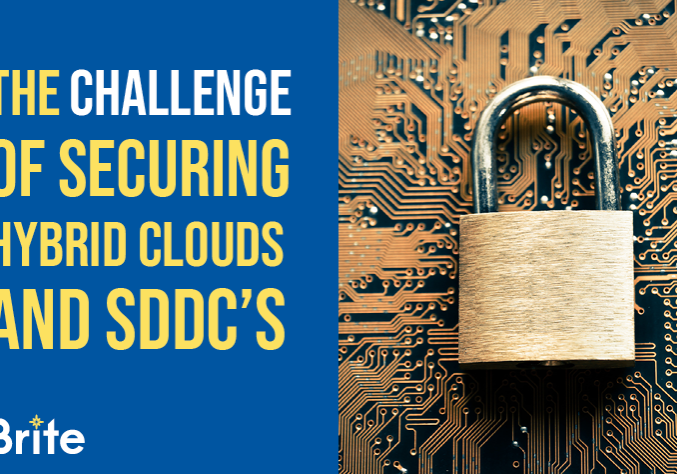The Challenge of Securing Hybrid Clouds and SDDC’s
February 28, 2017
With the advancement of technology, it has never been easier for organizations to expand their datacenter. This has been made possible by the introduction of public cloud computing and the Software-defined Data Center (SDDC). However, with this ease of use and network sprawl an inherit Cybersecurity issue has arisen.
Securing these methods of computing has historically been a challenge for organizations. The challenges are prevalent when a CISO tries to fill the gaps with security policies, controls, and monitoring that align with current best practices with burgeoning cloud and SDDC security requirements. This methodology is an uphill battle that requires man hours as well as a high level of expertise.
In order to optimize the benefits of the Private Cloud, security requirements must be addressed in a new way. As enterprises move their network infrastructures to private clouds, it is essential for security to overcome the challenges outlined above and integrate with SDN architectures, network virtualization and orchestration platforms. The solution must be built on five key principles:
- Automated security services insertion into the network. Security service-chaining enables security for all traffic in the data center automatically. Now we can create security policies that implicitly configure the network in the background.
- Policy and context-awareness. Understand the state of the applications and the context by integrating into cloud orchestration and IT tools, like ticketing systems, user directories, and SDN controllers. Learn and apply the best policy based on state and context. This also enables secure, scalable deployments and allows you to grow the number of applications in the data center safely.
- Trusted automation and orchestration. To effectively enable automation, it needs to be trusted. Trust-based APIs enable self-service integrations with third-party systems and automate policy changes within the scope of their privileges. This means administrators can allow changes to specific rules within the policy.
- Compliance and threat visibility. If a compromised virtual machine is detected, it must be quarantined with options for remediation. Reporting and analytics are necessary to uncover and understand traffic trends.
- Centralized management. Security management is simplified with unified administration and monitoring of physical and virtual security gateways, and public IAAS such as AWS, Azure, Rackspace, and VMware CloudAir.
Want to learn more about cloud security? Fill out the form below and a Brite representative will help find the right fit for your organization!

